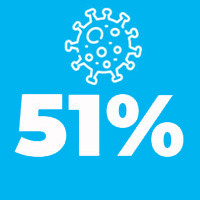51% of students who tested positive were asymptomatic—making the case to not just test those with symptoms

A new study on Duke University’s coronavirus testing and surveillance strategy highlights the importance of widespread testing of asymptomatic individuals to prevent transmission and provides support for the feasibility of a pooled testing approach, in which multiple samples are combined in a single test.
The study based on real-world campus testing data adds to the evidence in support of frequent mass testing of all students on campus. Over the course of the first 10 weeks of the fall semester, Duke conducted 68,913 tests on 10,265 students. Asymptomatic testing was scaled up to testing targets, which include testing for residential undergraduates twice weekly, off-campus undergraduates one to two times per week, and graduate students approximately once weekly.
Duke employed a two-stage testing strategy where the first stage used a sensitive test in a low-prevalence population, and the second stage used EUA clinical tests in the identified subset of samples where the pretest probability was higher.
Among those tested 84 were positive for SARS-CoV-2, and 51% were among persons with no symptoms. The pooled screening resulted in 158 positive pools that, upon deconvolution, identified 29 (18.4%) confirmed cases.
The study concluded:
- The finding that 51% of SARS-CoV-2 infections in this analysis were asymptomatic suggests that a substantial proportion of infections would be missed with only symptomatic testing
- Due to high testing frequency, an accurate weekly per-capita infection incidence was calculated, averaging 0.08% during the measurement period
- Surveillance testing at this scale in a relatively low-prevalence population will identify more false positives than true positives; thus, the current two-stage approach and pooling size allows rapid identification and confirmation of asymptomatic cases for contact tracing
At a Glance
To Read the Full Study: Click Here
Source: Source: Denny TN, Andrews L, Bonsignori M, et al. Implementation of a Pooled Surveillance Testing Program for Asymptomatic SARS-CoV-2 Infections on a College Campus — Duke University, Durham, North Carolina, August 2–October 11, 2020. MMWR Morb Mortal Wkly Rep 2020;69:1743–1747. DOI: http://dx.doi.org/10.15585/mmwr.mm6946e1
Disclaimer: Scientific articles are presented for educational purposes only and are not intended to promote any Beckman Coulter product or service. Opinions and conclusions are those of the respective authors and not Beckman Coulter. English
English

